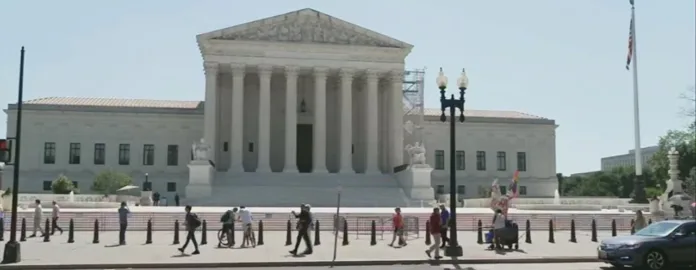Landmark ruling affirms federal law barring firearm possession for individuals under domestic violence restraining orders from the Supreme Court
In a pivotal decision, the Supreme Court has upheld a federal law prohibiting individuals subject to domestic violence restraining orders from possessing firearms. This ruling marks the court’s first significant Second Amendment decision since the 2022 Bruen ruling, which expanded gun rights.
Chief Justice John G. Roberts Jr., writing for an 8-1 majority, affirmed that the Constitution allows for laws that restrict gun ownership for those deemed a credible threat to the safety of intimate partners. The case, United States v. Rahimi, centred on Zackey Rahimi, who challenged the law after being placed under a restraining order following a violent incident with his girlfriend. The court’s decision reinforces the legality of such measures, citing the need to protect potential victims from harm.
However, the ruling’s scope was narrowly tailored, focusing solely on the specific issue of restraining orders and not addressing broader challenges to gun control laws, such as bans on military-style rifles or restrictions on nonviolent offenders’ gun possession.
The decision comes in the wake of the Bruen ruling, which mandated that gun restrictions must align with historical precedents to withstand constitutional scrutiny. This requirement has sparked numerous legal challenges against existing gun laws, shaping the landscape of Second Amendment jurisprudence.
Justice Clarence Thomas dissented, arguing that stripping an individual of their Second Amendment rights based solely on a restraining order, without criminal charges, violates constitutional principles. He emphasized the lack of historical precedent for such measures, setting him apart from the majority’s interpretation.
The ruling also highlighted divisions among the justices, including conservative members, on how lower courts should interpret and apply historical practices when evaluating Second Amendment challenges. This internal discord underscores the complexities and evolving nature of gun rights litigation in the United States.
Analysis:
Political: The Supreme Court’s decision has significant political implications, reaffirming the government’s authority to enact firearms restrictions aimed at preventing domestic violence. It reflects ongoing debates over the balance between public safety and individual rights, influencing legislative efforts and public discourse on gun control.
Social: From a societal perspective, the ruling addresses critical issues of domestic violence and gun safety. By upholding restrictions on firearm possession for individuals under restraining orders, the court supports measures designed to protect vulnerable populations, particularly women and families at risk of intimate partner violence.
Racial: While not explicitly racial, the impact of domestic violence disproportionately affects certain racial and ethnic communities. The ruling’s affirmation of firearm restrictions may indirectly benefit marginalized groups who are disproportionately affected by domestic violence incidents involving firearms.
Gender: The decision has profound implications for gender dynamics, acknowledging the heightened risks faced by women in abusive relationships. By upholding restrictions on firearm possession during restraining orders, the court strengthens protections for victims of domestic violence, reflecting broader societal efforts to address gender-based violence.
Economic: Although less directly economic, the ruling indirectly impacts public health costs associated with domestic violence incidents involving firearms. By reducing access to guns in situations deemed dangerous, the decision may contribute to mitigating the economic burden of violence-related healthcare expenses and legal proceedings.
